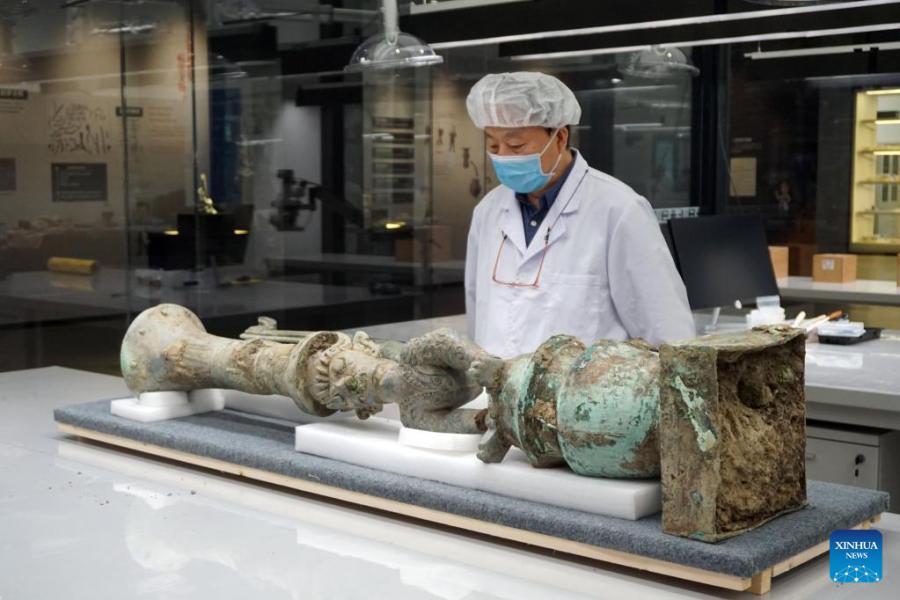
Lei Yu, a researcher of the Sichuan Provincial Cultural Relics and Archeology Research Institute, views a successfully matched bronze sculpture that depicts a human-head, snake-body, and bird-claw figure on June 16, 2022. A newly unearthed bronze sculpture at the famed Sanxingdui Ruins site was successfully matched with another bronzeware part after being set apart about 3,000 years ago, the archaeological team confirmed Thursday.
The sophisticated bronze sculpture depicts a figure of a human head and snake body, with protruding eyes, tusks, and horns. Above the head is a cinnabar trumpet-shaped zun (an ancient wine vessel) and the figure is linked by its hands and a square pedestal urn-shaped lei (an ancient wine vessel.) Without the rear part of the body, the sculpture was recently excavated from the No. 8 sacrificial pit.
Archaeologists later found that another bronzeware part, which was unearthed from the No. 2 pit in 1986, can perfectly match with the figure's lost body part.
The incomplete part wears a tight skirt with cloud patterns and has strong legs with bird claws that step on two birds.
Archaeologists speculate that the human-head, snake-body, and bird-claw figure should be a divinity statue. (Xinhua/Xiao Lin)
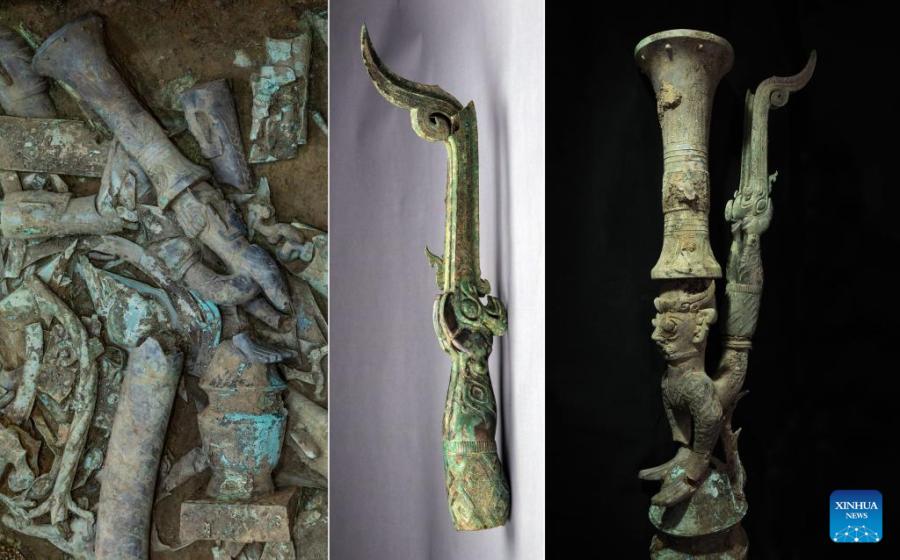
Combo photo shows scattered parts of a newly unearthed bronze sculpture (L) at the No. 8 sacrificial pit at the Sanxingdui Ruins site (photo taken by Xinhua journalist Shen Bohan on June 1, 2022); a bronzeware part (C) that was unearthed from the No. 2 sacrificial pit in 1986 (photo taken on June 15, 2022 and provided by Sanxingdui Museum); and the combination of the two parts (photo taken by Lu Haizi on June 15, 2022), in southwest China's Sichuan Province. (Xinhua/Xiao Lin)
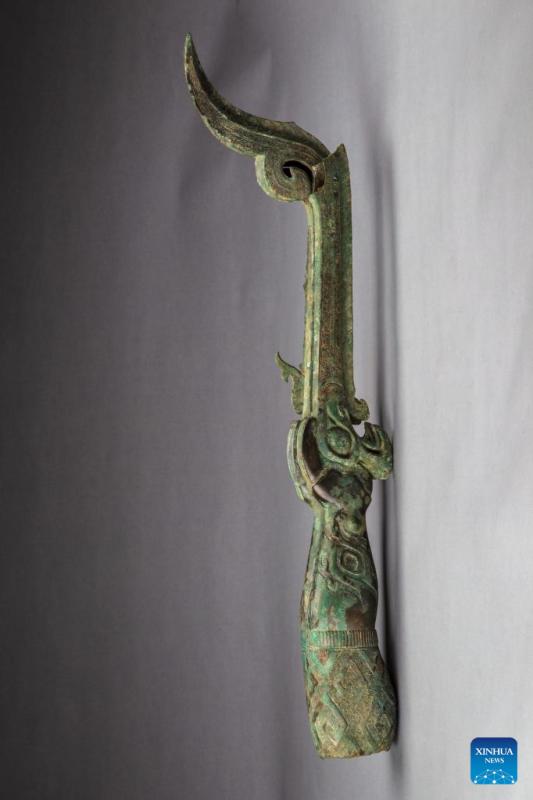
Photo taken on June 15, 2022 shows a bronzeware part that was unearthed from the No. 2 sacrificial pit in 1986 at the Sanxingdui Ruins site in southwest China's Sichuan Province. (Xinhua/Xiao Lin)
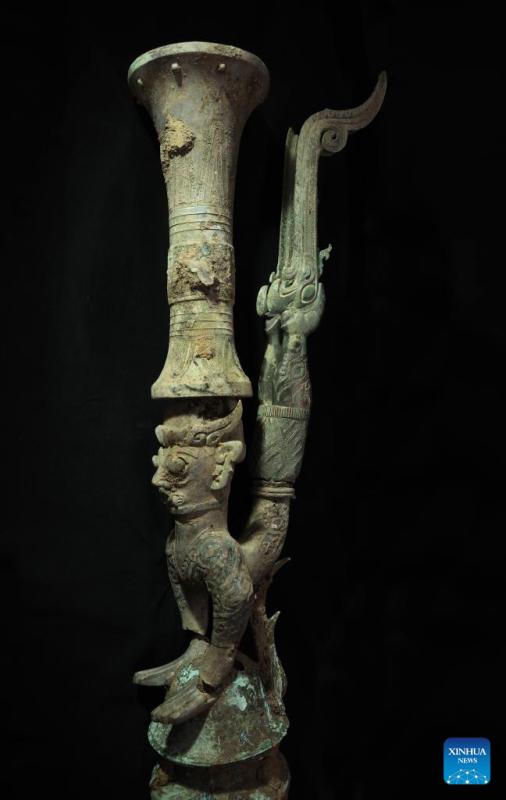
Photo taken on June 15, 2022 shows a successfully matched bronze sculpture that depicts a human-head, snake-body, and bird-claw figure, in southwest China's Sichuan Province. (Xinhua/Xiao Lin)
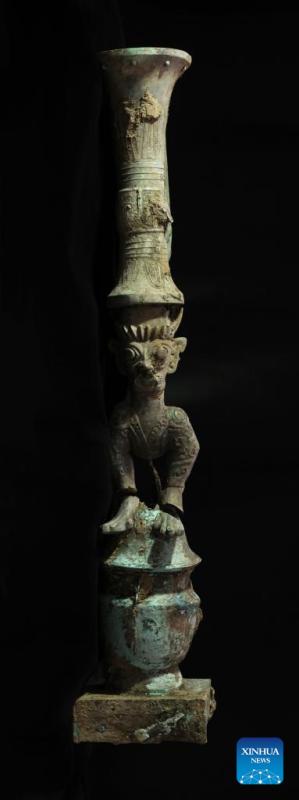
Photo taken on June 15, 2022 shows a successfully matched bronze sculpture that depicts a human-head, snake-body, and bird-claw figure, in southwest China's Sichuan Province. (Xinhua/Xiao Lin)
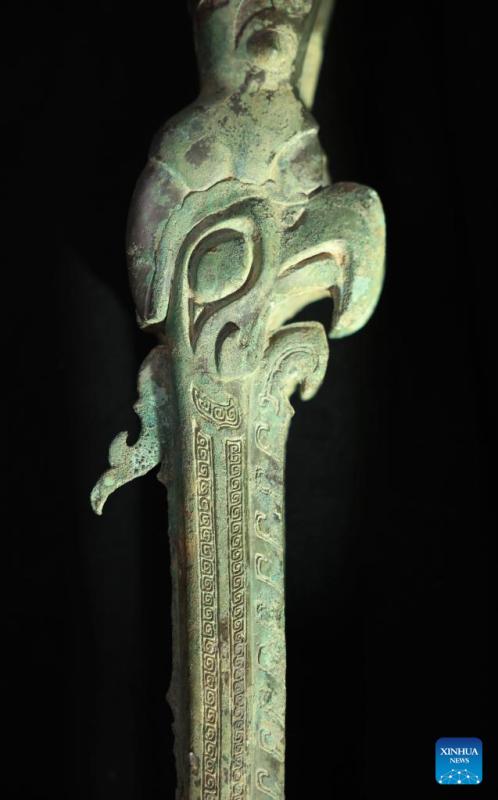
Photo taken on June 15, 2022 shows a bronzeware part that was unearthed from the No. 2 sacrificial pit in 1986 at the Sanxingdui Ruins site in southwest China's Sichuan Province. (Xinhua/Xiao Lin)
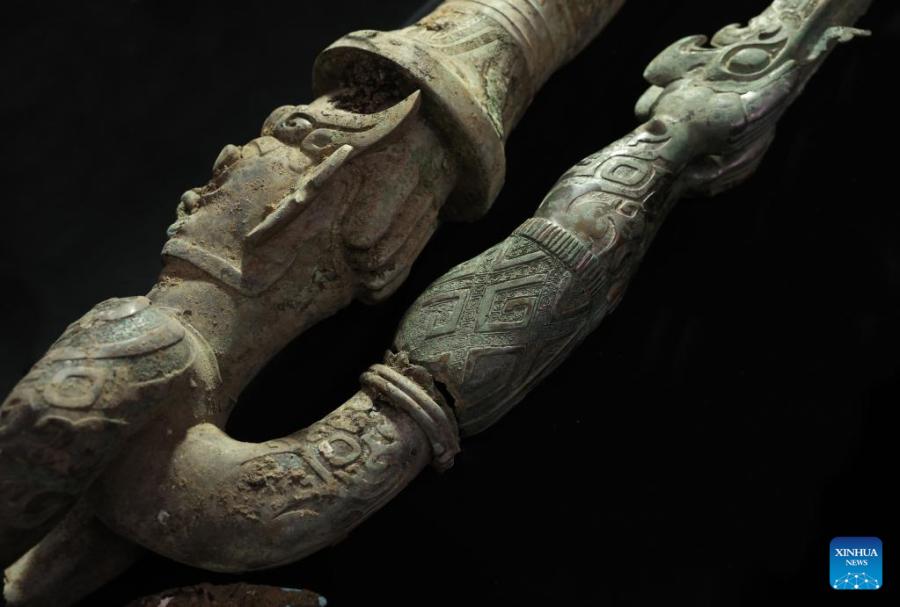
Photo taken on June 15, 2022 shows a bronzeware part that was unearthed from the No. 2 sacrificial pit in 1986 at the Sanxingdui Ruins site in southwest China's Sichuan Province. (Xinhua/Xiao Lin)
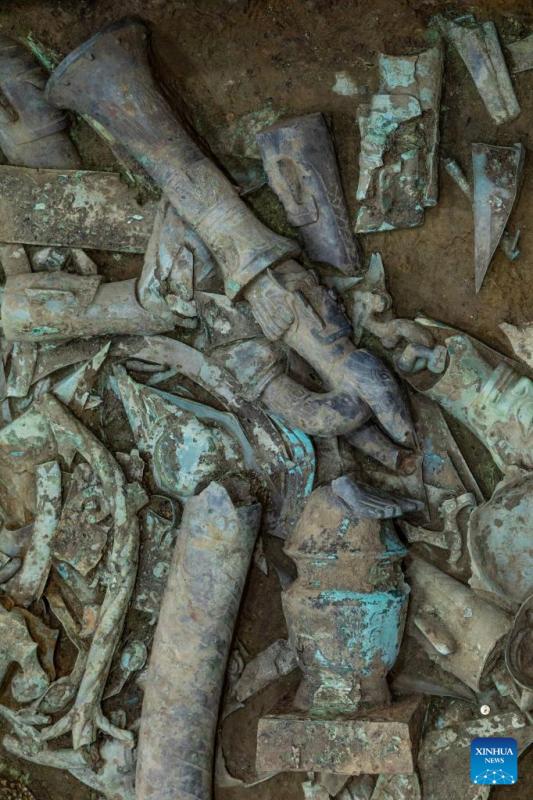
Photo taken on June 1, 2022 shows scattered parts of a newly unearthed bronze sculpture at the No. 8 sacrificial pit at the Sanxingdui Ruins site in southwest China's Sichuan Province. (Xinhua/Xiao Lin)
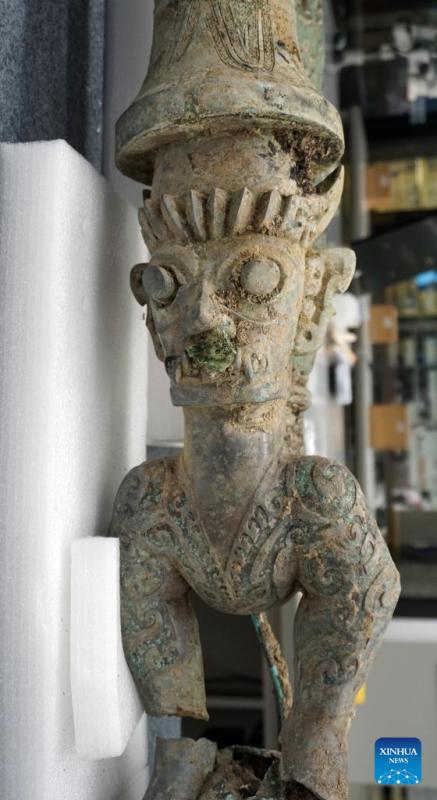
Photo taken on June 16, 2022 shows part of a successfully matched bronze sculpture that depicts a human-head, snake-body, and bird-claw figure. A newly unearthed bronze sculpture at the famed Sanxingdui Ruins site was successfully matched with another bronzeware part after being set apart about 3,000 years ago, the archaeological team confirmed Thursday.(Xinhua/Xiao Lin)

Photo taken on June 1, 2022 shows scattered parts of a newly unearthed bronze sculpture at the No. 8 sacrificial pit at the Sanxingdui Ruins site in southwest China's Sichuan Province. (Xinhua/Xiao Lin)
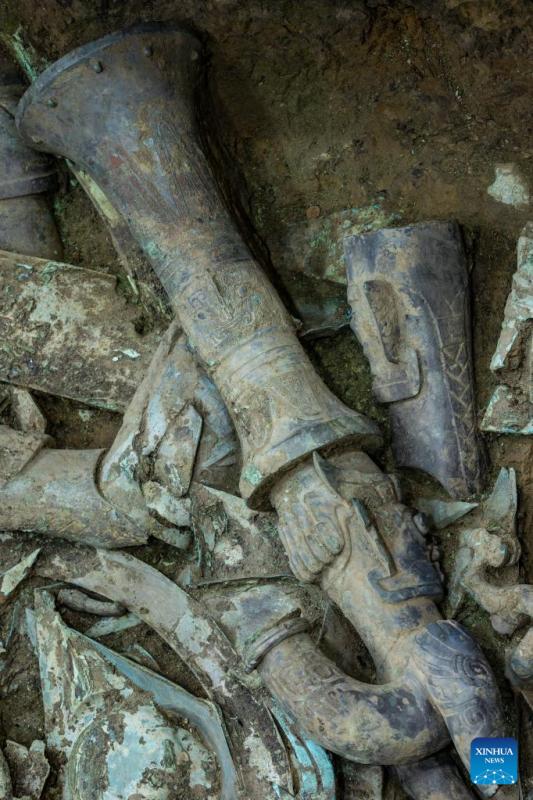
Photo taken on June 1, 2022 shows scattered parts of a newly unearthed bronze sculpture at the No. 8 sacrificial pit at the Sanxingdui Ruins site in southwest China's Sichuan Province. (Xinhua/Xiao Lin)
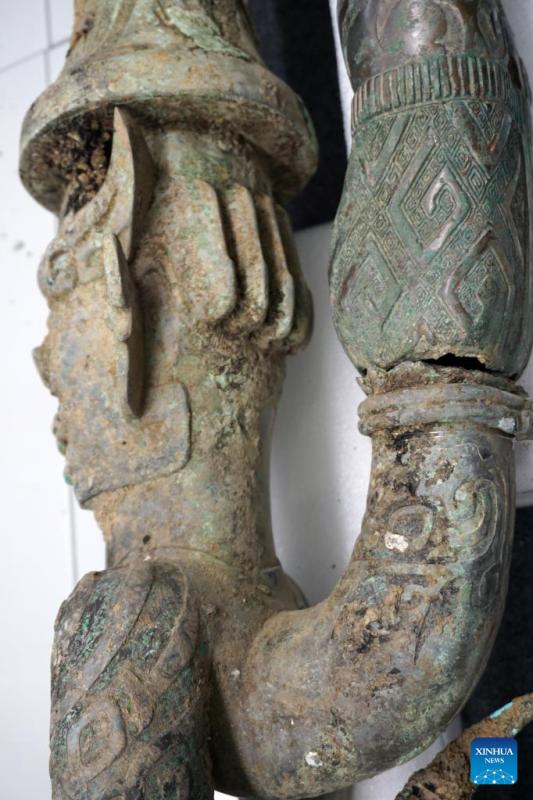
Photo taken on June 16, 2022 shows part of a successfully matched bronze sculpture that depicts a human-head, snake-body, and bird-claw figure. A newly unearthed bronze sculpture at the famed Sanxingdui Ruins site was successfully matched with another bronzeware part after being set apart about 3,000 years ago, the archaeological team confirmed Thursday. (Xinhua/Xiao Lin)












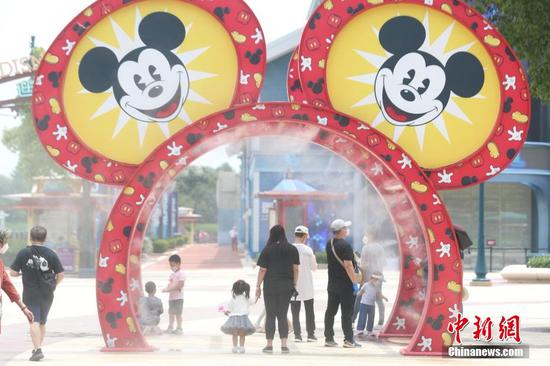

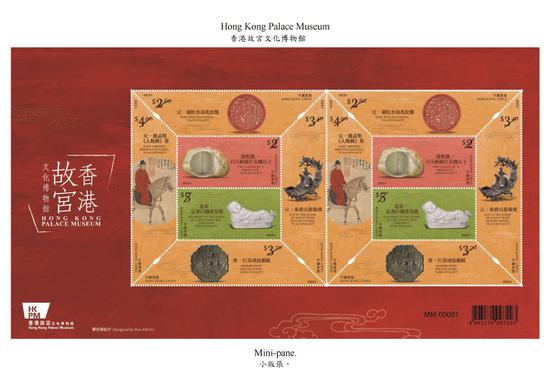

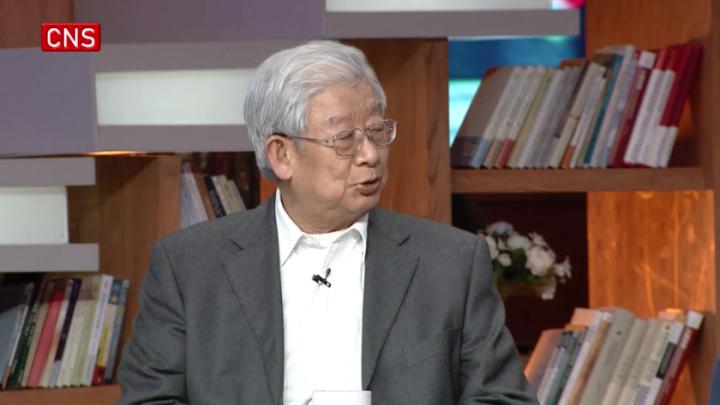





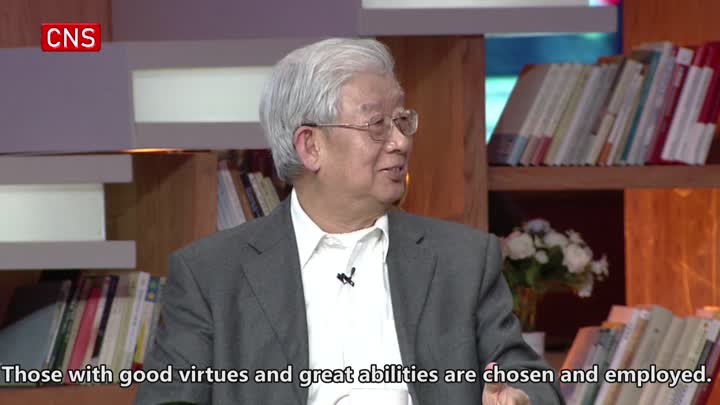
 京公网安备 11010202009201号
京公网安备 11010202009201号